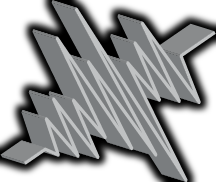I’m going to talk about audio CD’s, even though it’s becoming less and less common to use a mechanical device to play music.
Whenever someone finishes a project with me and needs somthing on disc, they get a data DVD as well as the audio CD master. The data DVD contains all of the files of the session – all tracks, no edits, all starting from the beginning of the project. Also included in separate folders are the WAV mixes and the WAV masters. This is not just so that you can return to the studio at a later time and be able to pull up the project to change a vocal line, although that’s handy. It’s also not just to have the tracks in case you want to take them to another studio on another audio platform, although that’s handy, too. It’s also about avoiding errors.
When you burn an audio CD on your computer, you also burn errors onto the disc. It’s unavoidable. The faster your burn speed, the more errors you introduce onto your audio CD. The only reason we are even able to play an audio CD is because the players have error correction circuitry built into the device. Some are better than others. That’s why your CD will play on your stereo at home but stutters when you put it in your car.
Copying data from a CD or DVD is another thing entirely. Error correction is built into the process. So if you take the data DVD I’ve given you, navigate to the Master folder, and copy the mastered WAV files that you find there over to your computer, they will be bit for bit identical to what was on the disc and what was on my computer. That means when you burn a CD using those WAV files, you are starting with the best quality of data you have available.
If you are selling CD’s that you’re burning from your home computer, this should go a long way towards preventing returns on CD’s that won’t play.
